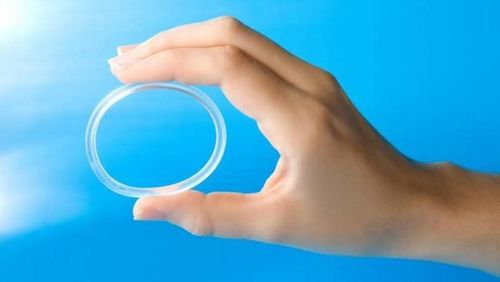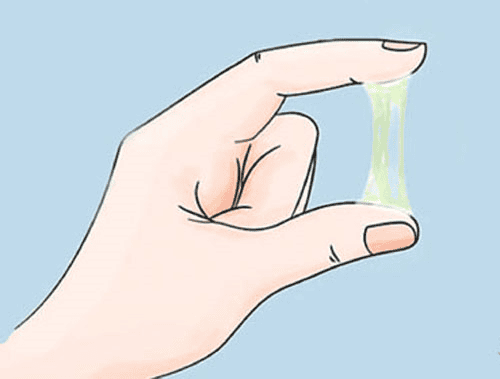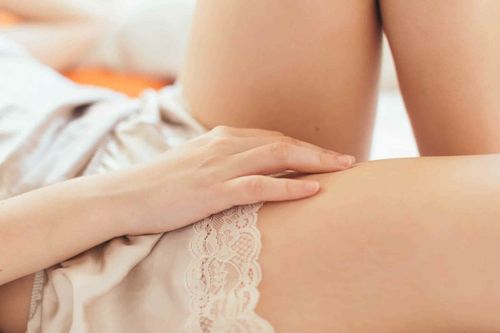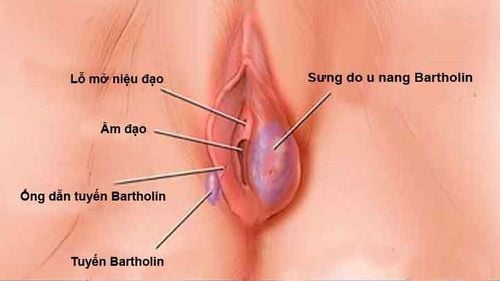This is an automatically translated article.
The article was professionally consulted by Specialist Doctor II Pham Thi Tuyet Mai - Obstetrician and Gynecologist - Department of Obstetrics and Gynecology, Vinmec Hai Phong International General HospitalPostpartum uterine prolapse often occurs in women who have given birth many times, have multiple pregnancies, have too long a normal delivery time, are old, or often do heavy labor in the postpartum period.
1. Why do postpartum women often have uterine prolapse?
Uterine prolapse, or uterine prolapse, is a condition in which the uterus descends to a lower-than-normal position, which is quite common in older women, especially when going through many births. However, there are also many cases of postpartum uterine prolapse seen in young people with few children.
Postpartum uterine prolapse is common in women who do hard labor and carry heavy loads too soon after giving birth. When a woman has just given birth, the uterus is still quite large and heavy, and cannot fully contract. Meanwhile, the supporting muscles and ligaments in the perineum are still soft, have not recovered after pregnancy, and cannot support the uterus to always be fixed in one position. Therefore, heavy labor, strenuous activity, and walking too much have the risk of causing the uterus to fall.
Manifestations of uterine prolapse depends on the severity of the disease and symptoms in each person. However, when having uterine prolapse after giving birth, the patient often feels heaviness and tightness in the vulva area, and can even clearly feel a round mass that is completely exposed outside the vagina and can be touched. The following are some symptoms that show that the uterus of a woman after giving birth is abnormal:
The patient feels very difficult to urinate, urinary incontinence. There is a feeling of heavy pelvic pressure, pressure on the vulva area. Pain when urinating, frequent urination, small amount of urine. Signs of severe back pain. Sometimes during vigorous activity, the patient feels a round mass retracting completely outside the vagina. Pain during sex and difficulty reaching orgasm. When noticing the above signs, the patient should see a doctor specializing in obstetrics and gynecology for an accurate diagnosis and examination. Moreover, patients should not delay and prolong the time for too long, because severe postpartum uterine prolapse can lead to inflammatory complications, affecting general health as well as the ability to get pregnant later. this.
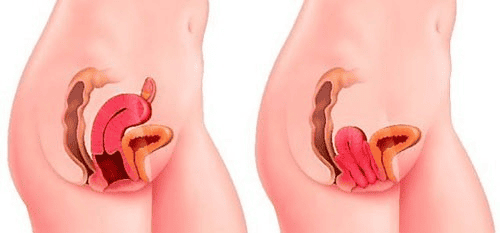
2. What is the probability of uterine prolapse for vaginal and cesarean deliveries?
Vaginal delivery or cesarean section are not important risk factors for uterine prolapse. However, uterine prolapse is caused by the weak muscles, ligaments and supporting tissues that support the uterus after childbirth, the ability to support the uterus is limited, and it takes time to fully recover and recover. The time it takes for a woman to recover body function after giving birth is called the postpartum period. This is a sensitive period, prone to uterine prolapse, especially for high-risk subjects described above.For a mother who gives birth vaginally, the postpartum period lasts 6 weeks, that is, about 6 weeks after childbirth, the mother's uterus will return to its normal state. On the other hand, cases of cesarean section will need a longer recovery time after giving birth compared to vaginal births. Therefore, the uterus of a woman who has had a caesarean section also needs a longer time to recover, requiring the mother to pay great attention to rest and recovery, while the uterus is still large and heavy. The supporting muscles are still weak, making it easy for the uterus to prolapse into the vaginal canal.
3. How to limit postpartum uterine prolapse?

Uterine prolapse is a condition involving the muscles and ligaments responsible for supporting the uterus. Therefore, at the time of birth, the mother should walk gently, be moderately active, to both avoid the situation of fluid retention, and help the uterine muscles contract, limit pressure on the pelvis, and help the uterus. quickly shrink back to normal.
Besides, postpartum women also need to eat a lot of green vegetables and fruits to avoid constipation, exercise gently to strengthen the health of the muscles. Straining to have a bowel movement can also be a cause of uterine prolapse. In addition, postpartum women should breastfeed, which is both good for the baby, and helps the uterus contract, expel the fluid and shrink.
Women after giving birth should have a follow-up examination to be examined by an obstetrician-gynecologist and given a scientific treatment to help the condition recover quickly.
Please dial HOTLINE for more information or register for an appointment HERE. Download MyVinmec app to make appointments faster and to manage your bookings easily.





